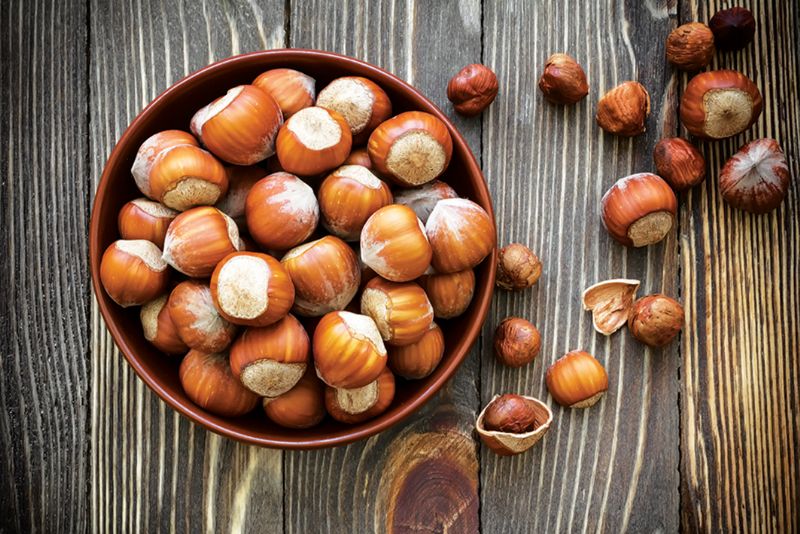- Home
- News, Articles & Reviews
- All Food & Drink
- Cocktail Time
- Delicious Dish
- Wild Food Foraging
- Baking
- Catering
- General
- Review
- Vegan
We are hiring! Please click here to join our growing magazine delivery team in Gloucestershire!
Areas
Food & Drink
Archive

Hazelnuts
All Areas > Food & Drink > Wild Food Foraging
Author: Steven Hawley, Posted: Wednesday, 24th August 2016, 08:00
Bertram the Badger is an annual visitor to my back garden, and for good reason. Reaching over my back fence are the branches of the Hazel tree and it’s about this time of year that it starts to shed its fruit. This makes spending autumn afternoons in the garden a risky affair, as they have been known to leave small bruises if dislodged by a particularly strong gust of wind. Bertram, however, can’t get enough of this nutritional nutty nourishment. When the hazelnuts first start to fall, my wife and I make sure that one of the fence panels sits slightly ajar, allowing Bertram access during the night to get his fill. But since there are so many falling every day, it would be remiss of us not to grab a few for ourselves.
Leaves are oval and have toothy edges
Hazel trees are usually found growing next to a water source or round the edges of agricultural fields where water run off might collect in drainage ditches. The tree has multiple stems, which grow tall, unusually straight and are often used to make thumb sticks to aid ramblers in their excursions. The leaves are oval and have toothy edges. Grab a couple of handfuls of hazelnuts from the ground, but check them over for small holes – as the Filbert Weevil also considers these little nuts a tasty morsel – and store them in a container in a cool dark place for a couple of months to allow them to mature.
Great for topping trifles or finely ground and sprinkled over a hot chocolate
By the end of the year you should have a nice little natural treat to enjoy. Roughly chopped, they’re great for topping trifles, or finely ground they can add a nutty twist if sprinkled over a frothy hot chocolate.
If you’re not 100% sure that what you’re picking is safe for human consumption, don’t pick it. If you’re prone to food allergies, or pregnant, always seek medical advice before consuming anything foraged in the wild.Other Images
Copyright © 2025 The Local Answer Limited.
Unauthorized use and/or duplication of this material without express and written permission from this site's author and/or owner is strictly prohibited. Excerpts and links may be used, provided that full and clear credit is given to The Local Answer Limited and thelocalanswer.co.uk with appropriate and specific direction to the original content.More articles you may be interested in...


© 2025 The Local Answer Limited - Registered in England and Wales - Company No. 06929408
Unit H, Churchill Industrial Estate, Churchill Road, Leckhampton, Cheltenham, GL53 7EG - VAT Registration No. 975613000You are leaving the TLA website...
You are now leaving the TLA website and are going to a website that is not operated by us. The Local Answer are not responsible for the content or availability of linked sites, and cannot accept liability if the linked site has been compromised and contains unsuitable images or other content. If you wish to proceed, please click the "Continue" button below:




